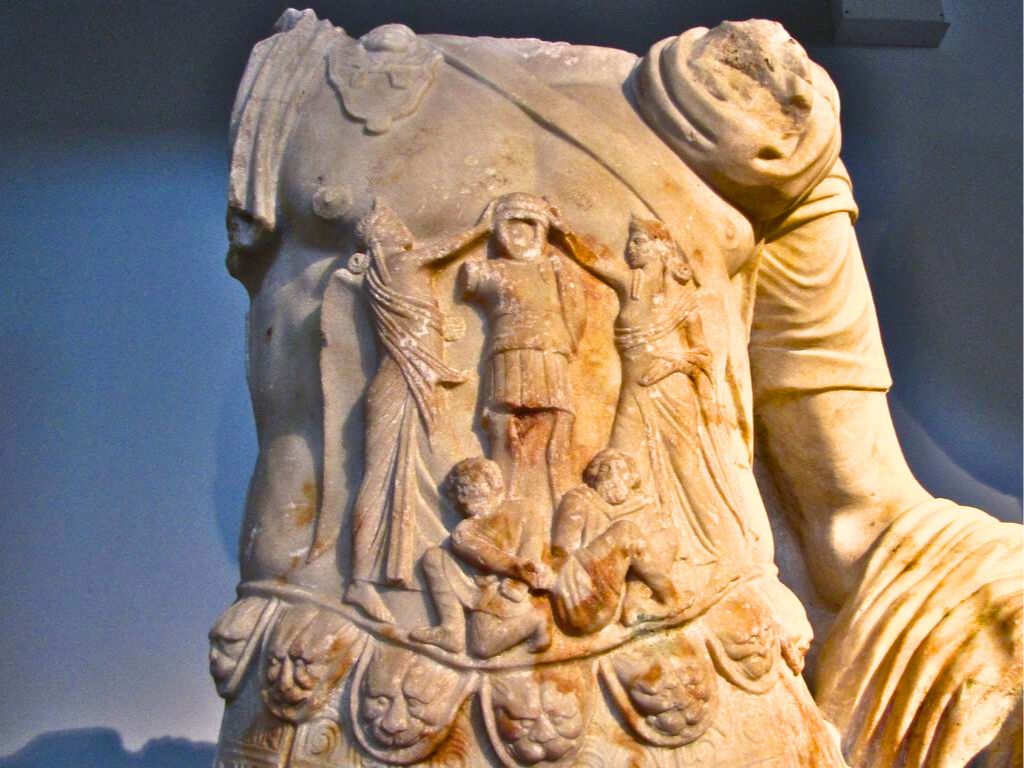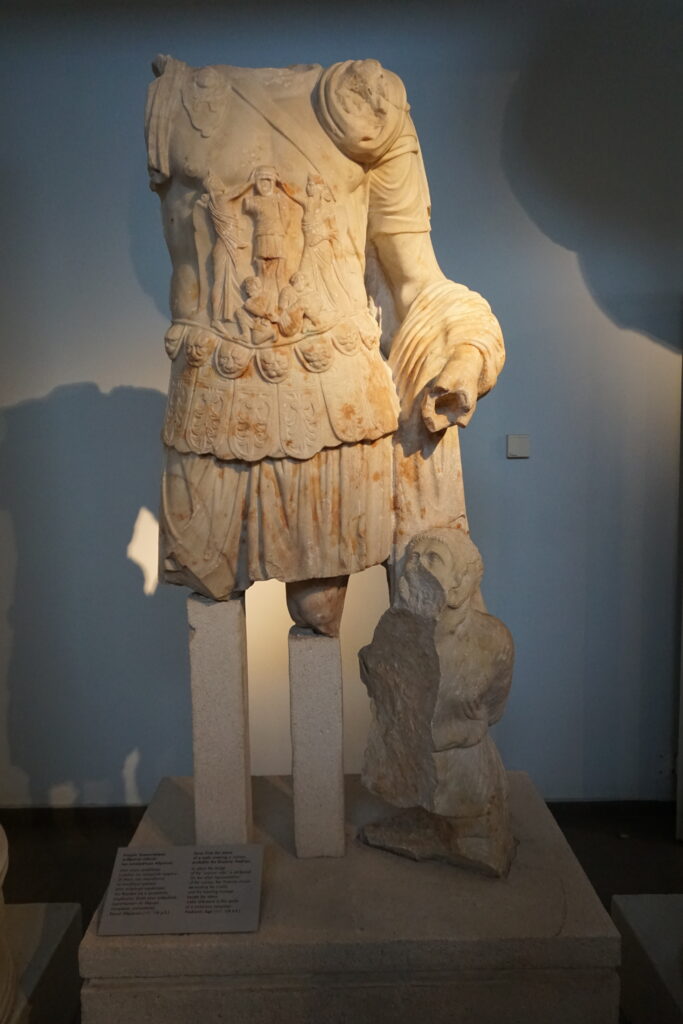In ancient history, soldiers disarmed the bodies of their dead enemies, meaning they removed the sword, spear, and any tools of destruction from the now-dead enemy and he brought them home.
The soldier affixed his spoils to the top of a long wooden pole. Why? At the victory celebration the soldier held his trophies high, showing off all that he retrieved from the enemy. He displayed his spoils on the long wooden pole at the march of triumph.
In the Archeological Museum of Thessaloniki, Greece we have something incredibly special: An ancient soldier displaying his spoils.

The kneeling hostage is a slave, a part of the spoils of the soldiers’ victorious campaign.

Two girls, winged goddesses of victory, decorate the trophy which displays the soldier’s spoils from the battle. Slaves, brought back with the soldier, sit at the foot of the trophy.

The Apostle Paul of the New Testament highlights the victory of Jesus Christ in the book of Colossians. He references disarming and displaying of spoils, and the triumph over principalities and powers, by the cross.
Colossians 2:15 says, “And having disarmed the powers and authorities, He (Jesus Christ) made a public spectacle of [His spoils], triumphing over them (the powers and authorities) by the cross.”
But the question is, “Spoils?”
Who are Jesus’ spoils?” The spoils were the weapons and tools of destruction that had been used in battle by the principalities and powers: Us.
Remember that the way for evil to be expressed in this world was not by animals or plants.
The way for evil to be expressed in the world is through us. We were the weapons and tools of the powers and authorities. But Jesus Christ Himself disarmed the rulers and authorities, gathered His spoils from the dead enemy, and triumphed over powers and authorities, by the cross.
Colossians 2:15 “And having disarmed the powers and authorities, he made a public spectacle of [his spoils], triumphing over them (the powers and authorities) by the cross.”

The Apostle Paul says in Galatians 2:20 that we are crucified with Christ; we are fixed on the cross with Christ.

The statue is a Roman soldier, not an ancient Greek soldier, so it is slightly stylized.
